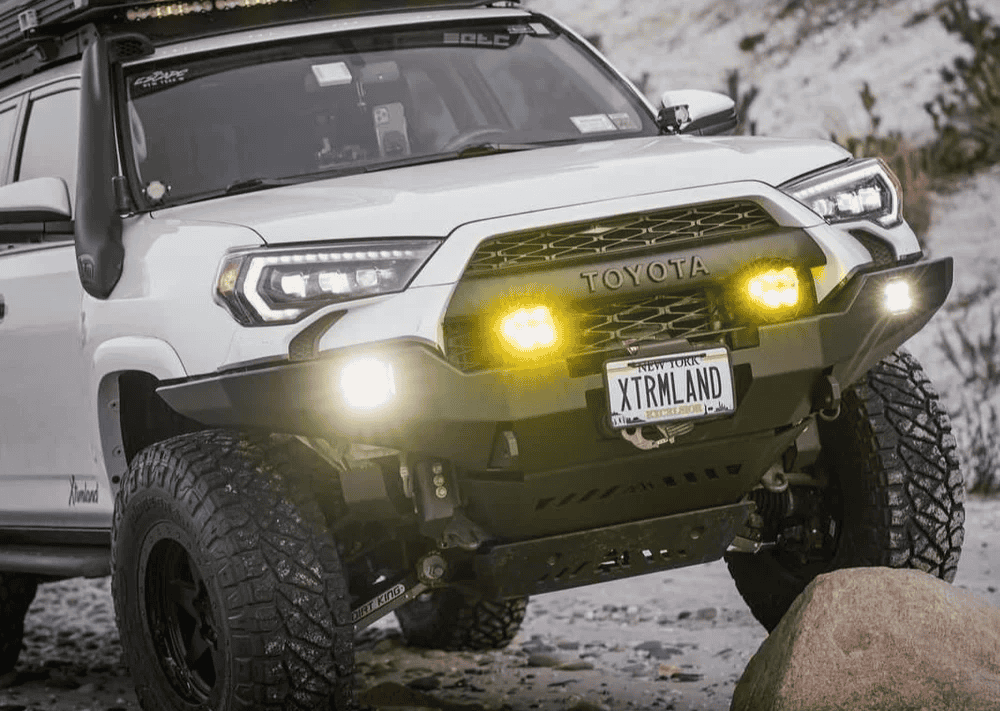Overland Vehicles

Shock resistant mounts exist to protect a payload from impact and vibration that would otherwise cause damage or downtime. Success starts with physics: lower the transmissibility between the base and the component by tuning stiffness and damping so the natural frequency sits well below the dominant input band. Keep resonance away from typical operating ranges and the entire system runs quieter, cooler, and longer. Orientation matters because many elastomer systems behave differently in shear than in compression. Designers also account for center of gravity, lever arms, and offset loads so the mount remains stable under multi axis shock.
Real environments are messy, so load cases must go beyond a single number. Engineers consider shock spectra shaped by potholes, curb strikes, trail chatter, and accidental drops, along with sine and random vibration from engines, tires, and wind. Lab profiles often reference standards like MIL STD 810 for guidance on shock durations and peak g loads while allowing tuning for a specific vehicle or mission. The working plan should include worst case events plus realistic daily exposure to avoid fatigue surprises.
Elastomer selection sets the tone for isolation. High durometer polyurethane delivers stability at elevated temperatures with good tear resistance. Silicone maintains flexibility in extreme cold. Neoprene balances oil resistance and cost. Viscoelastic materials like Sorbothane provide strong damping but require careful attention to creep and set. For high shock with limited space, wire rope isolators excel because they can take big hits, tolerate misalignment, and handle multi axis inputs without bonding failures. Cone and sandwich mounts are compact options that perform well when oriented appropriately and kept within rated deflection.
Hardware and bracketry turn that material choice into a reliable system. Plates and gussets are typically cut or machined from 6061 T6 aluminum or 304 and 316 stainless when corrosion resistance is critical. Fatigue is the enemy, so avoid sharp internal corners, add generous fillets, and align fastener loads with primary force paths. Captive designs that constrain the payload even if an element fails add a margin of safety for critical electronics or batteries.
A smart path blends modeling with rapid prototyping and test. CAD and FEA support bracket thickness, rib patterns, and expected stress hot spots, while simple lumped mass models estimate isolation behavior across frequency. Early prototypes can be CNC machined or cut and formed to confirm clearances, service access, and deflection under hand loads before committing to full runs. Instrumented testing with accelerometers measures input versus output so teams can quantify transmissibility and verify tuning.
Modeling starts with mass properties and stiffness estimates, then moves to multi degree of freedom representations if the payload is tall or flexible. Sine sweeps reveal resonances and guide changes to durometer, geometry, or spacing between mounts. Random vibration shows energy across bands that may not appear in a single sine tone, while drop tests confirm survivability during rebound and secondary impacts. Iteration is normal; changing stiffness by even a modest percentage can meaningfully shift the system response.
Fastener strategy separates reliable mounts from near misses. Use graded hardware matched to the substrate and torque to spec with a calibrated wrench. Locking features like prevailing torque nuts, threadlocker, or safety wire keep joints seated through high frequency inputs. Where electronics pass through, add grommets and strain relief to preserve sealing and reduce cable transmitted vibration. For long life, define inspection intervals and torque checks based on duty severity rather than calendar time.
Surface treatment extends service life and keeps fasteners removable. Powder coat is durable for steel, while hard anodize protects aluminum in abrasive environments. Stainless parts benefit from passivation to remove free iron and improve corrosion resistance. Mind galvanic pairs where dissimilar metals meet; isolating washers or compatible finishes prevent unwanted battery effects in wet or salty conditions. In marine or winter road service, sealed cavities and drain paths prevent trapped moisture and freeze damage.
The most successful shock resistant mount designs honor real packaging constraints and maintenance needs. Sensitive electronics like inverters, battery management systems, communication hardware, or navigation displays benefit from isolation that reduces vibration induced failures in solder joints and connectors. Underbody components such as skid mounted compressors or tanks need captive mounts to survive rock strikes without tearing free. Roof rack attachments for antennas or satellite units also profit from tuned brackets that filter high frequency tire and wind inputs.
On a vehicle, isolation is only part of the story. Maintain service access for fuses, filters, and connectors, and keep mounting bolts visible for inspection. Provide thermal paths so high power devices can shed heat even while isolated. Manage cable routing with slack loops and tiedowns so wire bundles do not become unintended load paths. When part of an off grid platform, IP rated seals, boots, and gland fittings keep dust and water at bay while the mount handles the shaking.
OZK Customs applies these principles when fabricating mounts for overland and commercial platforms, from CNC cut brackets to bonded isolator assemblies that protect power systems and comms gear. If you are outfitting a trail ready vehicle, see our overland rigs to understand how isolation supports reliability on washboard and rock. For platform specific solutions with integrated wiring and service access, explore our custom overland upfit. To learn how we approach materials, testing, and finishes for long life, visit Why choose OZK Customs.
Bring your mounting challenge and we will turn it into a durable, serviceable solution that keeps your gear online when the terrain gets rowdy. Share your payload, duty cycle, and environment, and our team will model, prototype, and fabricate mounts that meet your targets for isolation, access, and longevity.
Ready to turn vibration problems into dependable performance? Tell us about your platform, payload, and use case. Our team will spec materials, design isolation, and fabricate mounts that survive the road, trail, or jobsite. Submit the form and let OZK Customs engineer a solution you can trust.
ADDRESS:
6159 E Huntsville Rd, Fayetteville, AR 72701
PHONE:
(479) 326-9200
EMAIL:
info@ozkvans.com